- Home
- Lisa Appignanesi
Trials of Passion Page 2
Trials of Passion Read online
Page 2
Because comparisons between societies, their legal and medical systems and understandings of justice help to illuminate what goes on in each, the following pages take us first to Britain, then to France and America. In each I have chosen a widely reported trial of passion – not in any way simply to do with sexual predation or perversion – to focus on, though other trials important to the doctors and for the cultural shifts they helped to provoke, cluster round. The first two major trials are of women who murdered, or attempted to. The third is that of a man. It seemed to me that since men and women are not deranged by love in altogether parallel ways, it would be interesting to chart some of the different paths each have taken.
The principal histories I’ve chosen are not the all too common domestic crimes in which violent husbands murder long-abused and allegedly straying wives, or even the more occasional crimes in which the downtrodden wife strikes out and back: violence of this sort was as sadly prevalent in the early history of the mind-doctoring professions as it is now. I have concentrated instead on the less usual crimes: the ones that captured the imagination of their time, provoked a social furore and necessitated the presence of the psychiatrists at some stage. They produced trials through which the mind doctors extended their influence. These were public events that elaborated and broadcast understandings of passion and ‘insanity’ in its many forms both in and outside the law.
Such uncommon and sensational trials had a marked impact on social debates and arguably on relations between the sexes. In them, women left conventional middle-class passivity behind to become actors: their crimes were calls to freedom in which they became agents of their own fate. In turn, the trials both reflected and generated anxieties about gender. They instigated greater scrutiny of women’s condition and interrogated where social restrictions, sexual attitudes, unequal status and sheer injustice propelled crime. One could say these were trials that educated: they probed buried emotions, hidden sexual relations, and sometimes a larger, more generalized injustice that had erupted into crime.
At the time this book begins, in 1870, the divisions between the public and the private, to say nothing of the secret sphere, were far more rigid than they are today. Outside fiction and poetry, the emotions and the inner life of the individual, let alone sex, were rarely discussed. Criminal trials – in which lawyers pleaded on behalf of deranged lovers, while mind doctors gave an opinion on insanity and extreme emotion and journalists engaged in commentary and elaboration - dared people to think the unthinkable. They marked one of the new public arenas where the passions, the perversions, the sexually permissible and the attributes of the feminine were examined.
Between my first case and my last, the mind doctors had grown their influence and understanding and had become regular assessors of mental states, as well as expert witnesses. In many countries, the earliest being Germany, Austria and France, they worked as forensic psychiatrists within the apparatus of the law. A modern era of collaboration had been ushered in.
PART ONE: BRITAIN
THE UNSPOKEN
‘A free woman in an unfree society will be a monster.’
Angela Carter
I
Christiana Edmunds and the
Chocolate Cream Murders
1. The Borgia of Brighton
On Wednesday 16 August 1871, a notice was posted by order of the Chief Constable of the Brighton police:
BOROUGH OF BRIGHTON
£20 REWARD
Whereas some evil-disposed person has lately sent
to different families in Brighton, parcels of fruit cakes and sweets,
which have been found to contain poison, the particulars of two
of which cases are stated at the foot hereof, notice is hereby given
that whoever will give such information to the undersigned as
shall lead to the apprehension and conviction of the
offender will be paid a reward of twenty pounds.
The bottom of the notice, printed in full in the Brighton and Hove Gazette the following Thursday, gave detailed descriptions of the boxes of ‘white deal’ (pine) in which the poisoned delicacies had been sent, carriage fully paid from London Victoria rail station to ‘different persons in Brighton’. Each of the boxes contained a variety of preserved fruits, nuts, sweetmeats and cakes, some of which were separately wrapped. The outer wrapping paper carried a message: ‘A few homemade cakes for the children, those done up are flavoured on purpose for yourself to enjoy. You will guess who this is from, I can’t mystify you I fear. I hope this will arrive in time for you to-night while the eatables are fresh.’ Another note, the police stated, was much the same, except it was signed ‘G.M.’.
The message-wrapped delicacies contained the poison.
As rumour spread, something akin to panic gripped the city. Just two months back, on 12 June, a small boy, Sidney Albert Barker, aged four and two months, had died after eating a poisoned chocolate purchased from the well-known confectioner, Maynard of West Street. Everyone, it seemed, knew someone who knew someone who in those spring and summer months had been affected by chocolate creams and sweets. Left in bags in sundry places or purchased direct from Maynard’s, these chocolates had produced stinging throats, nausea, diarrhoea and high temperature – all signs of ‘irritant poison’.
Food scares were hardly rare in Victorian Britain. In 1862, the Privy Council had estimated that one-fifth of all butcher’s meat came from diseased animals. Ice cream, or ‘hokey-pokey’, might contain anything from lice to bedbugs and any number of bacilli. Copper was used to heighten the colour of butter, bread and gin. Other treacherous additives adulterated everything from milk to mustard, wine and preserves, while arsenic dyes saturated wallpapers, curtains, upholstery and carpets. Indeed, arsenic use was widespread, and until the 1851 Arsenic Act, which required purchasers to sign a poison register, it was also freely available. Women used it in cosmetic preparations, to clean their bonnets or treat the ‘itch’ – STDs. Tobacco and food might well come wrapped in arsenic-tinted paper. Men, like the twenty- seven-year-old American Mrs Maybrick’s fifty-year-old husband, used it as an aphrodisiac, a fact that didn’t prevent her being convicted of his murder by poison in 1889, largely because she had all but confessed to adultery.
Hard chocolate, a novelty at the time, was still something of an upmarket and coveted delicacy. To find it becoming the bearer of poison gave it an emphatically sinister edge. Who could be responsible for the creation of these toxic sweets and their malicious diffusion?
The June inquest on little Sidney Barker had found against neither the chocolate-maker nor Maynard’s the purveyor, despite clear testimony that his sweets were on occasion poisonous. Sidney had died from the effects of strychnine. Several letter-writing Brightonians – one of them signing himself a ‘seeker after justice’, while expressing condolences – had urged the boy’s father to pursue legal proceedings against Mr Maynard. This hadn’t happened.
Now came a new orchestrated wave of poisonings. It transpired that all the toxic sweet boxes referred to in the police notice had found their way to the homes of prominent Brighton citizens: Mrs Emily Beard, wife of Dr Charles Izard Beard of 64 Grand Parade; their neighbours Mr and Mrs Boys – who lived just a few numbers down on this elegant tree-lined avenue, a mere canter from the India-inspired exoticism of the domed Royal Pavilion where George IV, while Prince of Wales, had cavorted with his beloved Mrs Fitzherbert; Mr William Curtis, proprietor of the Brighton Gazette, the city’s self-proclaimed ‘fashionable and conservative chronicle’; Mr G. Tatham, a borough justice; and the chemist, Isaac Garrett of Queen’s Road.
Chief Constable George White asked Inspector Gibbs to investigate. He had been in charge of the Sidney Barker case. Inspector Gibbs was alerted by the doctor treating Mrs Beard’s servant, taken severely ill after eating some of the wrapped teacup-shaped plum cake her mistress had abstained from, that he had also been called to the side of one Christiana Edmunds. She too had received a poisoned gi
ft box and was unwell. Inspector Gibbs was already acquainted with Miss Edmunds. She had come forward to testify at the inquest into little Sidney Barker’s death, since she had been affected early on, it seemed, by the plague of poisonings. She had told the coroner then that on two separate occasions the chocolate creams she had purchased from Maynard’s had produced a burning in her throat and made her ill. She had sent the chocolates to a chemist for examination: a report had come back saying they were ‘strongly impregnated with zinc in combination with a vegetable or organic acid’.
Christiana Edmunds lodged with her mother at 16 Gloucester Place, just a few steps north and across the wide avenue from Grand Parade. Like its neighbours, this was a lofty, elegant residence, though their rented rooms were perhaps not quite what the women had been used to while Christiana’s father, one of Margate’s leading architects, had been alive. Giving her age as thirty-five, Christiana was single, self-possessed, fair, above average height and well dressed – as the press later commented. When Inspector Gibbs arrived at Gloucester Place on the afternoon of Sunday 13 August, Miss Edmunds was reclining on a sofa.
‘Here I am again, Mr Gibbs, nearly poisoned.’ She addressed him without rising from the couch. ‘You have heard that I have had a box sent to me with some fruit in it.’ The Inspector presumably nodded and pressed her a little, for Miss Edmunds went on: ‘It came on Thursday evening, about half-past 7 by post; it is evidently from some one in the town, for it bears only the Brighton postmark, and it is evident that it is no one acquainted with me, or they would have known my address and known how to spell my name properly.’
In response to Gibbs’s further questioning, Miss Edmunds told him the green box she had received contained some strawberries, two apricots and a pair of new gloves. Her mother had eaten the strawberries and was fine. ‘I ate one apricot and that was all right, but the next was very bitter and I spat it all out, and have been ill ever since.’ Evidently worrying about another burst of poisonings, she asked Gibbs whether it was true that other boxes had been received. She had heard that Mrs Beard had had one. Gibbs told her of the other parcels. ‘How very strange!’ Christiana Edmunds mused, ‘I feel certain that you’ll never find it out.’
But Inspector Gibbs was a shrewd and experienced detective. He also had a stroke of luck. Dr Charles Beard came to see him with a host of suspicions of his own. Beard was fairly certain that this was not the first time his wife had been subject to poisoning or attempted poisoning. He had let it pass before, since he had had no proof. But now, he could no longer contain his worries, whatever the personal risk to his reputation.
Charles Beard, an active and enterprising doctor, was one of three sons (one of whom now lived in Italy) of a propertied Brighton family. He had gone up to Trinity College, Cambridge, at the age of nineteen in 1846, taken a BA and then embarked on a medical degree at St Bartholomew’s Hospital in London. A respected member of the Royal College of Physicians, Beard also had a more adventurous side. In 1860 he had joined the British volunteers who went to the aid of the Italian revolutionary Garibaldi and his Mille, or One Thousand, in the great and greatly romantic campaign – covertly supported by Britain – to liberate Sicily from Neapolitan rule and eventually unify Italy. The same year, Beard married Emily Izard, probably a cousin, the wife who was to bear him four children. A year later, they were living at 64 Grand Parade and Charles was building up a practice amongst the affluent of Brighton, as well as serving on the staff of the Sussex County Hospital. He would rise to the post of Government Inspector of Vaccination in the West Midlands and Yorkshire.
The story Charles Beard told Inspector Gibbs was not one that was easy for a Victorian gentleman to recount. This was an intimate tale and one that might impugn his respectability. For lack of definitive evidence and probably for fear of the implications it might have on his status, he had put off the telling of it, perhaps for too long. But now, he would brave the courtroom and the inevitable publicity.
Charles Beard was right to worry about his reputation. During this period, and increasingly since the new Court for Divorce and Matrimonial Causes had come into being in 1858, trials had become fodder for the national and local press. The intimacies revealed on the witness stand were often more shocking than what appeared in the pages of novels. The courts, as reported in the legal columns, had become one of the few spaces in Victorian Britain where the private sphere openly met the public. Under the interrogation of magistrates, the secret passions of both ladies and gentlemen stood to be exposed – often enough, verbatim – in the pages of the next day’s newspapers. Veils were lifted on desires and types of relationships that had formerly remained unspoken and unscrutinized.
Christiana Edmunds had for about five years been both a patient of Dr Beard’s and a friend – of his wife’s as well, he stressed. Since 1869, she had also been writing him long and amorous letters, as often as two or three times a week. Sometimes more. She was, in short, in love with him. Whether he had encouraged a romantic liaison or whether any physical intimacy had taken place remains unclear. He denied the latter, but her letters – some twenty of which he had felt it necessary to destroy, lodging the rest with the court recorder – certainly point to an intimate ‘friendship’. It would not be the first time the word had been used to cover over other kinds of intimacy. Whatever its precise nature, it is clear that in Christiana Edmunds’s mind this was a uniquely passionate friendship.
In the summer of 1870, Beard had tried to cool the relationship and put a stop to her letters: these came to him at his home address, were forwarded to him, or even handed to him in the course of a medical visit. ‘This correspondence must cease, it is no good for either of us,’ he purportedly told her. Christiana didn’t or couldn’t see it that way. Meanwhile Beard’s unsuspecting wife continued to welcome Christiana and her mother into the family home, often when Charles was away travelling.
Then in September 1870 everything changed. Christiana was making an evening visit to Emily Beard, who was with an old, deaf and ailing house guest, a Mrs Richardson. On the point of leaving, Christiana brought out some chocolates which she said were intended for the Beards’ sleeping children. Abruptly, and with a gesture impelled by an uncustomary violence, she forced one of these sweets into Emily’s mouth, then rushed off.
In the accounts, the suddenness of this gesture – as if it were propelled by an explosion from within – is reminiscent of other reports of unexpected violence by individuals living out a delusional fantasy. Christiana may have been in the grip of a familiar erotic scenario. Charles had said her letters to him must stop, inevitably suggesting or using the existence of his wife as an excuse. In Christiana’s mind, getting rid of the obstacle that was Emily thus became the logical solution to what Charles too wanted: he was as much in love with her, she imagined, as she with him. Her sudden violence, with no prior identifiable provocation from Emily herself, suggests that a propulsive inner narrative directed her action: she was acting, possibly in a state of delirium, for the couple-in-love that she and Charles were in her fantasy.
Christiana’s chocolate cream, Emily told Charles when he returned home from one of his work trips, had had a cold metallic taste. She had spat out what she could of it. All night long, saliva had run from her mouth. She had felt very unwell and suffered from diarrhoea.
Late in September, Charles paid a visit to Christiana at her house. In a veiled and joking manner he alluded to his wife’s illness after eating the chocolate Christiana had given her. He also mentioned the very precise use to which the new instrument, the spectroscope, could now be put in detecting poison in animal tissue. Christiana’s response to his insinuation that she had poisoned Emily was emphatic. She denied any mischievous intent. She herself, she insisted, had been ill after eating chocolates from Maynard’s.
It was shortly after this that Charles Beard told his wife about the many letters Christiana had sent him. Whether he told her anything more about the nature of their relationship remains unclear in
the court record. He was not, after all, on trial, and despite the prodding of advocates, Victorians were still notoriously reticent about spelling out in public what went on in private. The question had even arisen of whether the new Court for Divorce and Matrimonial Causes should bar its often immodest proceedings from the press, since some maintained that, printed in full, the reports damaged public morality and could be thought to contravene the Obscene Publications Act. In any event, Beard didn’t see Christiana again until after the New Year. He was preoccupied, he said, with work and travel – and perhaps with contemplating a move away from Brighton. When they finally met in January 1871, Christiana made it clear that she wanted to return to their old intimacy. He told her that was impossible: he just couldn’t shed the suspicion that she had made some kind of attempt to poison his wife. At the direct accusation, Christiana waxed indignant. Hadn’t she been poisoned too? she declared again.
She may well have believed it. Disavowal, a splitting-off of what one doesn’t want to know about the self, is not an unusual psychic manoeuvre.
The following day Christiana went to Dr Beard’s house with her mother. Mrs Edmunds later testified that her daughter had absolutely insisted on the visit. Both women expostulated with Dr Beard and reprimanded him strongly. His insinuations were slanderous. There may have been no absolute threat, but Beard was left with the certainty that if he didn’t want to face a slander suit, one which he could ill counter given that there was no positive evidence to hand, he would have to retract his accusation of poisoning. He ended his meeting with the Edmunds women by laughing the matter off and putting his suspicions to one side.

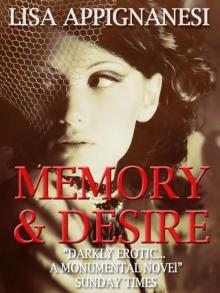 Memory and Desire
Memory and Desire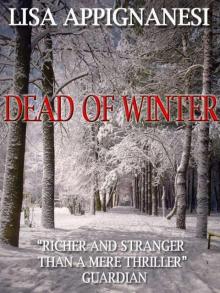 The Dead of Winter
The Dead of Winter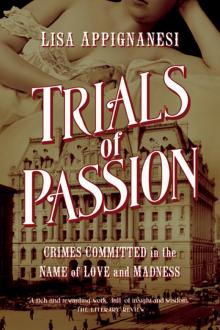 Trials of Passion
Trials of Passion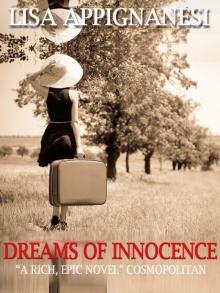 Dreams of Innocence
Dreams of Innocence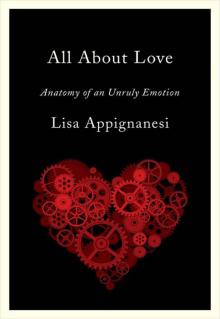 All About Love: Anatomy of an Unruly Emotion
All About Love: Anatomy of an Unruly Emotion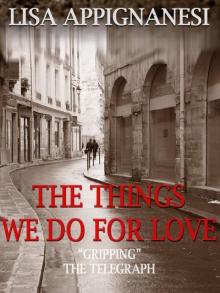 The Things We Do For Love
The Things We Do For Love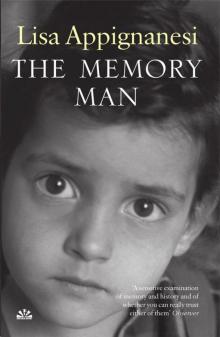 The Memory Man
The Memory Man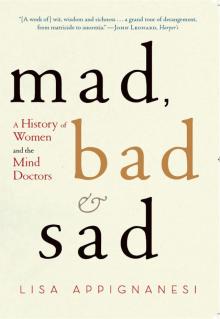 Mad, Bad, and Sad: A History of Women and the Mind Doctors
Mad, Bad, and Sad: A History of Women and the Mind Doctors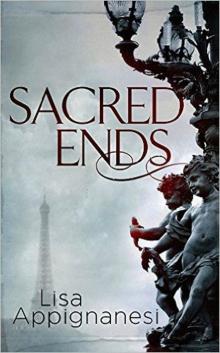 Sacred Ends
Sacred Ends Paris Requiem
Paris Requiem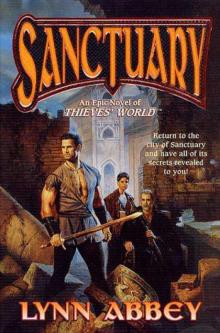 Sanctuary
Sanctuary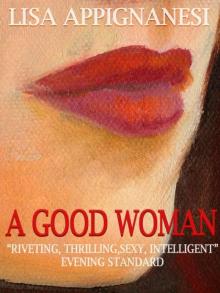 A Good Woman
A Good Woman